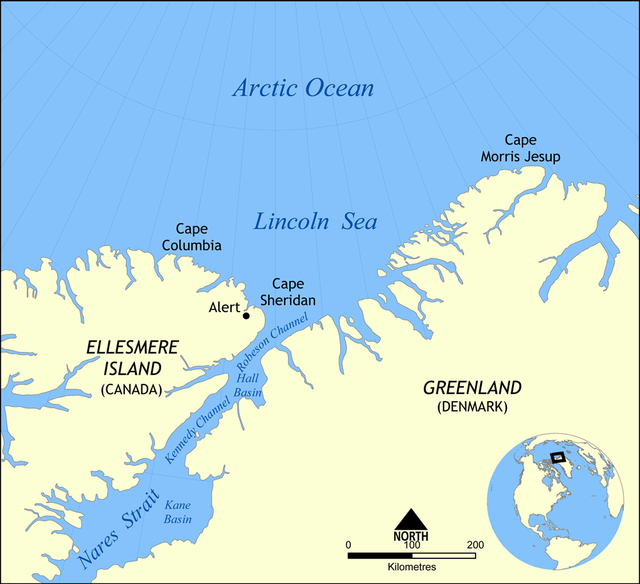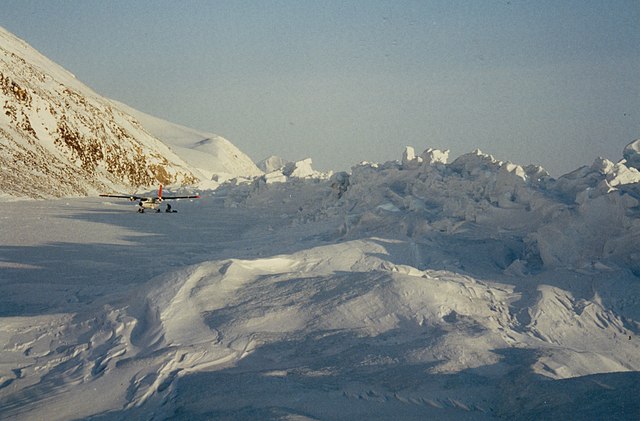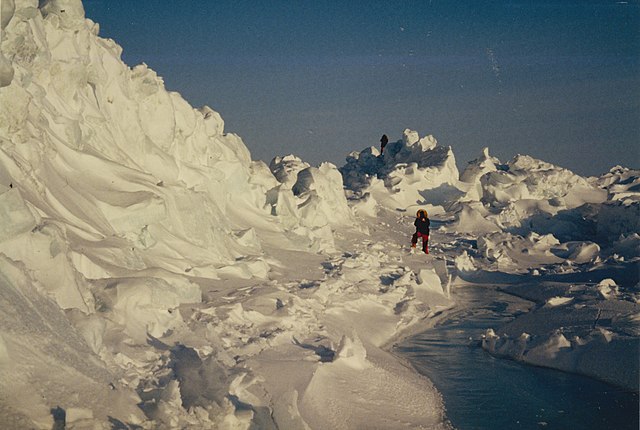Cape_Columbia
Cape Columbia
Cape in Nunavaut, Canada

This article needs additional citations for verification. (June 2019) |

Cape Columbia is the northernmost point of land of Canada, located on Ellesmere Island in the Qikiqtaaluk Region of Nunavut. It marks the westernmost coastal point of Lincoln Sea in the Arctic Ocean. It is the world's northernmost point of land outside Greenland. The distance to the North Pole is 769 km (478 mi).


As the northernmost point of Canada, Cape Columbia is exposed to the ice drift of the Arctic pack ice. The approximately 2 m (6 ft 7 in) thick pack ice of the Arctic Ocean moves several hundred meters per day from east to west. As a result, mighty ice pressure ridges can be piled up at Cape Columbia.